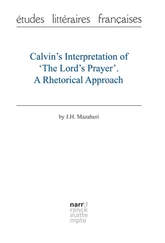Helge Fauskanger - J.R.R. Tolkien’s Lord’s prayer and Hail Mary in Quenya - Syntactical and Etymological Analysis
Здесь есть возможность читать онлайн «Helge Fauskanger - J.R.R. Tolkien’s Lord’s prayer and Hail Mary in Quenya - Syntactical and Etymological Analysis» весь текст электронной книги совершенно бесплатно (целиком полную версию без сокращений). В некоторых случаях можно слушать аудио, скачать через торрент в формате fb2 и присутствует краткое содержание. Жанр: Языкознание, на английском языке. Описание произведения, (предисловие) а так же отзывы посетителей доступны на портале библиотеки ЛибКат.
- Название:J.R.R. Tolkien’s Lord’s prayer and Hail Mary in Quenya: Syntactical and Etymological Analysis
- Автор:
- Жанр:
- Год:неизвестен
- ISBN:нет данных
- Рейтинг книги:5 / 5. Голосов: 1
-
Избранное:Добавить в избранное
- Отзывы:
-
Ваша оценка:
- 100
- 1
- 2
- 3
- 4
- 5
J.R.R. Tolkien’s Lord’s prayer and Hail Mary in Quenya: Syntactical and Etymological Analysis: краткое содержание, описание и аннотация
Предлагаем к чтению аннотацию, описание, краткое содержание или предисловие (зависит от того, что написал сам автор книги «J.R.R. Tolkien’s Lord’s prayer and Hail Mary in Quenya: Syntactical and Etymological Analysis»). Если вы не нашли необходимую информацию о книге — напишите в комментариях, мы постараемся отыскать её.
J.R.R. Tolkien’s Lord’s prayer and Hail Mary in Quenya: Syntactical and Etymological Analysis — читать онлайн бесплатно полную книгу (весь текст) целиком
Ниже представлен текст книги, разбитый по страницам. Система сохранения места последней прочитанной страницы, позволяет с удобством читать онлайн бесплатно книгу «J.R.R. Tolkien’s Lord’s prayer and Hail Mary in Quenya: Syntactical and Etymological Analysis», без необходимости каждый раз заново искать на чём Вы остановились. Поставьте закладку, и сможете в любой момент перейти на страницу, на которой закончили чтение.
Интервал:
Закладка:
II. HAIL MARY
Aia María quanta Eruanno
Hail Mary full of grace,
Aia"hail" (later form/alternative spelling of aiya ), María"Mary" (the "Quenya" form is based on the Latin pronunciation, as is Yésus = "Jesus" later), quanta"full", Eruanno"of grace" – evidently the genitive of * Eruanna "grace" or literally *"God-gift". This example shows that "full of" something is rendered as quanta + genitive. This use of the genitive has never been attested before [10] Earlier versions of the Quenya Ave Maria here uses the instrumental case instead: VT43:26, 27.
.
i Héru as elye ·
the Lord is with thee.
iarticle "the", Héru"Lord" (other sources have heru with a short e ), as"with", elye"thee" (or "thou", which is the meaning this word has in Namárië; we know little of what case Quenya prepositions normally govern, accusative or nominative). It will be noted that there is no Quenya word corresponding to "is" in the English version. Presumably it would have been possible to slip in such a word (before a prepositional phrase denoting a position it would probably be ëa rather than ná , hence * i Héru ëa as elye ) – but it is clearly not required. This is a nominal sentence, the word "is" being left out and understood. Such constructions are common enough in the languages of our own world (e.g. Russian and many Semitic tongues), and this construction may be common or even dominant in Eldarin as well. In Hail Mary, this line is the first of three consecutive nominal sentences. Such constructions are not unheard of in material that has been published earlier, either: in LR:47 we have ilya sí maller raikar for *"now all roads [are] bent". Vahaiya sín atalante Tolkien himself translated "far away now (is) the Downfallen", the parenthetical "is" clearly indicating that this copula is not directly expressed in Quenya (SD:247). It may be that nominal sentences without an explicit copula are normal rather than exceptional in Quenya.
As noted above, it would be possible to read aselye (as one word). If so, this is better taken as a preposition as "with" + the pronominal ending - lye "thou" (or in this context "thee"), with a connecting vowel - e - inserted before the ending to avoid an impossible consonant cluster (cf. e before another pronominal ending in Átar-e-mma ). Alternatively, the preposition could be # ase , the - e being part of it. This would in any case be the first known example of a preposition with a pronominal ending. There are, however, some arguments against reading aselye as one word. For one thing, s would then become intervocalic, and intervocalic s is normally voiced to z , later becoming r , so that we would have seen ** arelye instead. (As long as we do not know anything about the etymology of # as(e) "with", it is of course possible that it could represent earlier * aþ(e) , since s from þ in no case became z > r ; see the entry nísi in the Lexical Commentary below for an example. Yet this seems like an ad hoc theory.) The other argument against the reading aselye is that Quenya as we know it does not attach pronominal suffixes to prepositions, though we seem to have only one example to go on: Namárië, including the "prose version" in RGEO:67 where metric considerations are of no concern, reads imbë met for "between us". If independent pronouns were readily replaced by the corresponding pronominal ending following prepositions, we would expect * imbemmet (?) instead [11] However, VT43 cites examples of Quenya prepositions that do take pronominal endings. The mystery of why s fails to become r remains, though.
.
aistana elye imíca nísi :
Blessed art thou among women
aistana"blessed" (evidently a verb # aista - "bless" + the past participle ending - na ), elye"thou" (emphatic form), imíca"among", nísiplural of nís "woman" (according to all other sources, the plural ought to be nissi instead; see the Lexical Commentary). Just like in the sentence i Héru as elye "the Lord [is] with thee" above, the verb "is" is left out and understood.
ar aistana i yáve mónalyo Yésus :
and blessed is the fruit of thy womb Jesus.
ar"and", aistana"blessed" as above, i"the", yáve"fruit", mónalyo"of thy womb", which is # móna "womb" + the pronominal ending - lya "thy" + the genitive ending - o "of", that displaces a final - a (cf. Vardo as the genitive of Varda in Namárië), Yésus"Jesus". Yet again, the verb "is" is understood; there is no copula between aistana and i yáve . Notice that yáve receives the article i though it is also governed by a genitive that might be thought to determine it sufficiently. Other examples seem to indicate that it is inconsequential to the meaning whether the article is included or not when the noun is also governed by a genitive; it is to be considered definite in either case. The phrase i yáve mónalyo represents the same pattern as i Equessi Rúmilo "the sayings of Rúmil" in WJ:398; the article is included. On the other hand, Indis i · Kiryamo "The Mariner’s Wife" in UT:8 omits the article before indis "wife", but it is still definite because of the following genitive; this does not mean " a wife of the mariner". One question remains unanswered: Would it have been permissible to include the article if the genitive had preceded the word it governs (known to be a possible or even preferred word order – see below), or would * mónalyo i yáve , * Rúmilo i Equessi , * I Kiryamo i Indis be just as wrong as thy womb’s the fruit , Rúmil’s the sayings , the Mariner’s the Wife in English?
Aire María Eruo ontaril
Holy Mary mother of God,
Aire"holy", María"Mary", Eruo"God’s" ( Eru + genitive ending - o ), ontaril"mother" or more literally *"begetter" (with a feminine ending). Unlike the phrase i yáve mónalyo above, the genitive here comes before the noun it governs: Eruo ontaril is literally "God’s mother/begetter" in that order. Above we quoted some of the numerous attested examples of the opposite order, with the genitive following its noun instead. It is interesting to notice that while the "poetic" version of Namárië has rámar aldaron for "the wings of trees" (kenning for leaves), the prose version in RGEO:66 has aldaron rámar instead. Tolkien moved the genitive from a position following the noun it governs to a position preceding it. The latter is evidently the preferred order in normal prose, though exceptions abound.
á hyame rámen úcarindor
pray for us sinners
á hyame"pray", á being the imperative particle and hyame being an uninflected verbal stem "pray". The form rámenis one of the most obscure words in this text. It evidently means "for us", for which meaning we would expect to see a dative pronoun # men , attested several times above (incidentally suffixed to the imperative particle á ). Sure enough, rámen may seem to include # men , but what does the prefix # rá - mean? It seems superfluous to achieve the desired meaning. Conceivably this could be a specialized form of the dative, meaning something like *"on behalf of us", but the precise semantic impact of this word must remain a mystery for now [12] See the entry rámen in the Etymological analysis for further discussion.
. úcarindor"sinners", # úcarindo "sinner" with the plural ending - r . The word literally means rather *"evil-doers"; see the Lexical commentary. In UT:317, Tolkien sets out a grammatical rule that "in Quenya in the case of two declinable names in apposition only the last is declined". This "last declinable word" rule apparently does not apply when a pronoun and a noun stand in apposition. The dative case is evidently indicated by means of the ending - n as the final element of rámen , and úcarindor "sinners" (here standing in apposition to the pronoun rámen "for us") appears in the nominative rather than the dative plural (which would be * úcarindoin , according to the Plotz declension).
Интервал:
Закладка:
Похожие книги на «J.R.R. Tolkien’s Lord’s prayer and Hail Mary in Quenya: Syntactical and Etymological Analysis»
Представляем Вашему вниманию похожие книги на «J.R.R. Tolkien’s Lord’s prayer and Hail Mary in Quenya: Syntactical and Etymological Analysis» списком для выбора. Мы отобрали схожую по названию и смыслу литературу в надежде предоставить читателям больше вариантов отыскать новые, интересные, ещё непрочитанные произведения.
Обсуждение, отзывы о книге «J.R.R. Tolkien’s Lord’s prayer and Hail Mary in Quenya: Syntactical and Etymological Analysis» и просто собственные мнения читателей. Оставьте ваши комментарии, напишите, что Вы думаете о произведении, его смысле или главных героях. Укажите что конкретно понравилось, а что нет, и почему Вы так считаете.












